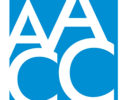Report roundup
By AACC 21st Century Center Staff
December 19, 2019
A monthly roundup of reports of interest to the community college sector.
Here are three reports you should know about this month.
- Though fall enrollment at community colleges continues to decline, the number of first-time postsecondary students at public two-year colleges is up. That’s according to a National Student Clearinghouse (NSC) Research Center report. Overall fall 2019 enrollment at public two-year colleges this fall dropped 1.4 percent (-77,092 students) compared to fall 2018, but first-time postsecondary enrollment at community colleges rose from 977,911 in fall 2018, to 986,623 this fall — an increase of 0.9 percent. Two-year colleges saw the largest increase in first-time college enrollment among students ages 18 to 24 (a 1.9 percent increase), while the number of students over age 24 decreased 5.9 percent. The number of students who are generally dually enrolled at high school and community college also increased, by 36,660 students to 654,116 — a 5.9 percent jump, according to the report.
- Another NSC Research Center report focuses on the completion rate of public two-year college students, which has reached 40 percent for the first time since the center started tracking such data. The six-year completion rate of students who entered two-year colleges in 2013 hit 40.8 percent. The six-year rates for the previous years’ cohort were 39.2 percent (2012 cohort) and 37.5 percent (2011 cohort). When looking at other higher education sectors, private nonprofit institutions had the highest six-year completion rate in the 2013 cohort at 76.5 percent, followed by 66.7 percent at public four-year colleges and universities, and 42.2 percent among private, for-profit four-year institutions.
- The Institute for Women’s Policy Research (IWPR) has a new study that provides state and national data on the share of single mothers in college and how investment in supports, such as child care, pay off after they graduate. The vast majority of single mothers in college (92 percent) do not graduate on time. They face a range of financial and time obstacles to completing their educational programs. But investment in college pays off significantly. According to IWPR’s study, single mothers earn roughly $256,000 more over their lifetimes with an associate degree and $625,000 more with a bachelor’s degree than what they would have earned with a high school education. Investing in supports for single mothers pays off, too, as single mothers with degrees pay more taxes and “society saves on public assistance spending.” For every dollar spent on child care for single mother students, the United States would get back $4.76.



